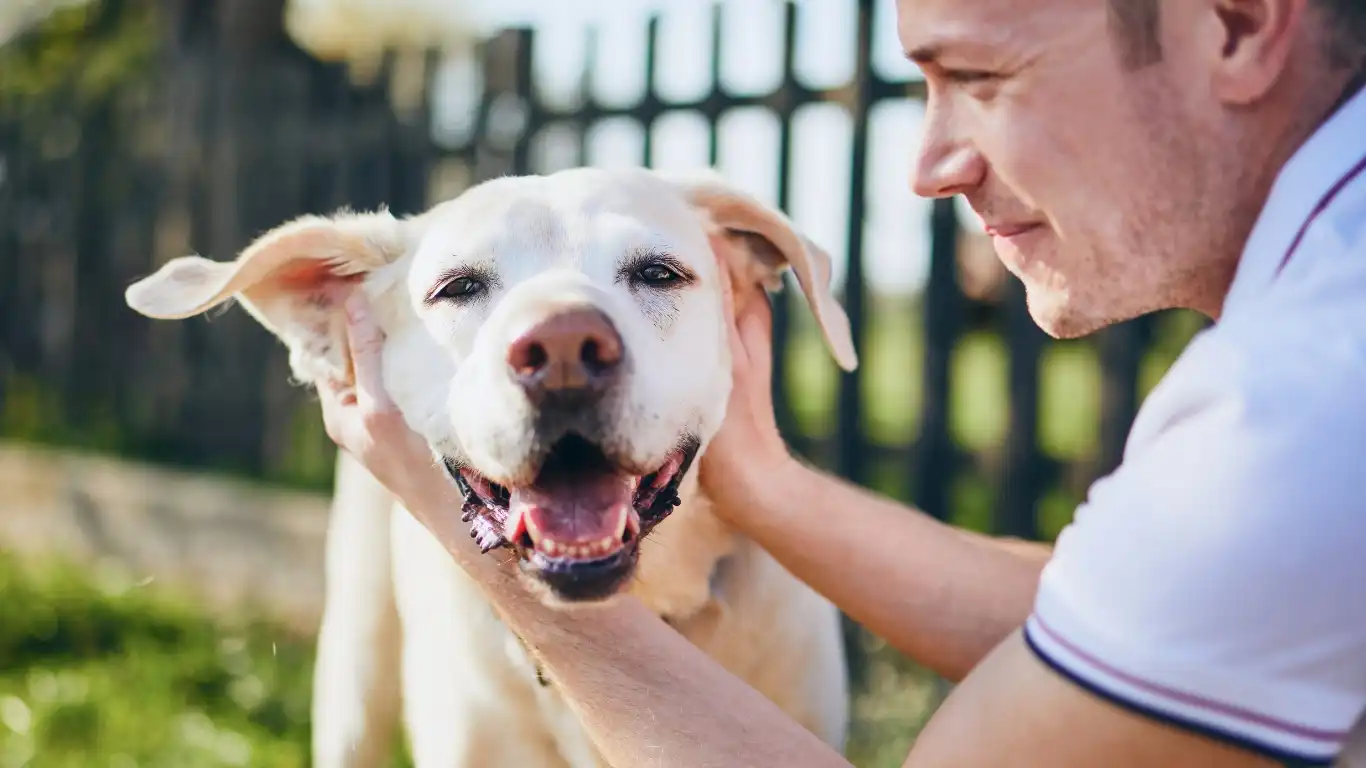Ultimate Guide: How to Care for Your Dog’s Skin During Allergy Season
Let me just say it upfront—figuring out how to care for your dog’s skin during allergy season can feel like you’re solving a mystery with fur-covered clues. As a vet tech who’s spent more hours than I can count helping itchy pups and their frustrated humans, I’ve seen it all—from seasonal flare-ups that just won’t quit to dogs who basically live in a cone of shame all spring. The good news? With the right know-how (and a sprinkle of patience), you can totally help your dog thrive even when the pollen count is off the charts.
What Does Allergy Season Look Like for Dogs?

First things first—yes, dogs can have seasonal allergies just like we do. The culprit? Usually pollen, mold, dust mites, or grasses. But unlike us, they don’t typically end up with runny noses or sneezing fits. Instead, you’ll see skin-related signs: itchiness, hot spots, redness, and flaking. Some dogs chew their paws raw, others rub their faces on the carpet like it owes them money. Sound familiar?
Here’s what you might notice when allergy season hits:
- Excessive licking or chewing—especially paws and legs
- Red or inflamed skin, often around the belly, armpits, or ears
- Persistent scratching that interrupts sleep (theirs and yours!)
- Dry, flaky, or scabby patches
- Frequent ear infections or foul-smelling ears
Trust me, if your dog is suddenly acting like they’re auditioning for a role in “The Itchy & The Furious,” it might be seasonal allergies doing the talking.
Common Triggers and Why They Mess With Your Dog’s Skin

So what’s triggering all this itchiness? It really depends on the region you’re in and the time of year, but some triggers are repeat offenders:
- Tree pollen—a big one during early spring
- Grass pollen—peaks during late spring and early summer
- Weed pollen—especially ragweed, in the late summer to fall
- Dust mites—indoors, all year round but worse in humidity
- Mold spores—often from damp areas like basements or mulch
From what I’ve seen in practice, dogs with food sensitivities often have worse skin reactions to environmental allergens. That’s where my nutrition background comes in handy. It’s all connected—gut health, skin health, immune response—it’s one big interconnected puzzle.
How to Care for Your Dog’s Skin During Allergy Season

1. Regular Baths Are Your Best Friend
This is probably the first thing I recommend in the clinic. Bathing your dog with a gentle, hypoallergenic shampoo can do wonders. It helps wash off pollen and other allergens before they soak into the skin. Don’t overdo it though—once or twice a week during peak season is usually enough, depending on your dog’s coat type.
Look for ingredients like:
- Oatmeal – calms irritated skin
- Aloe vera – moisturizes and soothes
- Chlorhexidine – helpful if there’s a bacterial component
Pro tip from someone who’s bathed a LOT of dogs: Use lukewarm water and rinse thoroughly. Residual soap can actually make things worse!
2. Wipe Paws After Walks
Ever come back from a spring walk and feel like your sinuses are on fire? Imagine that, but on your bare skin. That’s what it’s like for dogs. Use unscented pet wipes or a damp cloth to clean their paws and belly after every outing. Especially important for small dogs who are low to the ground—they’re basically pollen magnets.
3. Diet: The Inside-Out Approach
This is where my love for nutrition really shines. You can’t talk about skin without talking about what’s going into their bowl. A high-quality, omega-3 rich diet can reduce inflammation from the inside. And for allergic dogs, I often recommend limited-ingredient or novel protein diets—think duck, rabbit, or fish-based formulas.
If you’re dealing with an allergy-prone pup, here are some food ingredients to prioritize:
- Fish oil or krill oil for omega-3s
- Sweet potato and pumpkin for skin-friendly fiber
- Probiotics to support immune balance
Sometimes, a full-on elimination diet is necessary, especially if food allergies are compounding seasonal ones. If you’re not sure, it’s worth discussing with your vet—ideally someone who’s also into nutrition (like me!)
4. Keep Bedding and Home Allergen-Free
Even if your dog spends most of their time inside, allergens can follow them in—on your clothes, your shoes, or their own fur. Wash bedding weekly in hot water, vacuum regularly (with a HEPA filter if possible), and consider using air purifiers. Bonus points if your dog has a favorite spot near a window—pollen loves that open-breeze vibe.
And one more tip from experience—if you use fabric softener, go fragrance-free. Harsh scents can irritate sensitive skin even more.
Supplements That Can Help Soothe Your Dog’s Allergy-Season Skin

Let’s talk about supplements—because honestly, I’ve seen some incredible transformations when pet parents add the right support to their dog’s routine. When figuring out how to care for your dog’s skin during allergy season, supplements are one of the best kept secrets. But let’s keep it real—there’s a LOT of noise out there. Not every “skin and coat chew” lives up to its label.
From my experience in the clinic, here are the ingredients that actually make a difference:
- Omega-3 fatty acids – particularly EPA and DHA from fish oil. Helps reduce inflammation and promote that glossy coat we all love.
- Quercetin – sometimes called “nature’s Benadryl.” It’s an antioxidant and antihistamine that can reduce allergic responses naturally.
- Bromelain – often paired with quercetin, this pineapple enzyme helps with inflammation and absorption.
- Probiotics – because a healthy gut = a healthier immune system and skin. I’m a huge fan of this one in itchy dogs.
- Vitamin E and zinc – for skin repair and immune health.
Not sure where to start? I usually tell pet parents to try a reputable fish oil supplement (liquid or capsule) first, then build from there. And remember—always introduce one new supplement at a time. That way, if your pup has a reaction or a win, you’ll know who the credit (or blame) belongs to.
When Medications Are Necessary (And Totally Okay)

Okay, real talk—sometimes, home care and natural remedies just aren’t enough. I’ve had patients come in raw, inflamed, and downright miserable. In those cases, medications can be a game-changer. And there’s absolutely no shame in using them. The goal is always to improve quality of life—yours and your dog’s.
1. Apoquel and Cytopoint
These are two of the most commonly prescribed meds for dogs with environmental allergies. They work differently but can be very effective. Apoquel is a daily oral tablet that blocks itch signals, while Cytopoint is an injection that can offer relief for 4–8 weeks. I’ve seen some dogs stop scratching within 24 hours of getting their first shot. Like, night and day difference.
2. Antihistamines
They’re hit or miss. Some dogs do well on Benadryl or Zyrtec (with vet guidance, of course), while others don’t respond at all. But it’s worth trying—especially for mild allergy seasons or as an add-on to other treatments.
3. Topical treatments
I’ve had great luck with medicated mousses and sprays—especially those with chlorhexidine, hydrocortisone, or pramoxine. They’re easy to apply and perfect for localized hotspots or irritated areas. Plus, they’re great between baths when your dog won’t sit still long enough for a full soak.
Just be sure to talk with your vet about what’s best for your dog’s specific situation. I always say—there’s no one-size-fits-all with allergies.
Creating an Allergy-Safe Routine at Home

It’s not just about products—it’s about building a whole routine that supports your dog’s comfort. Once you’ve got a rhythm, you’ll start to notice the signs before they get out of hand.
Daily Habits That Really Help
- Brush regularly – especially for long-haired dogs. Use a de-shedding or slicker brush to remove allergens clinging to the coat.
- Wipe down after walks – don’t skip this one! Even a quick swipe over the legs, belly, and paws can help.
- Hydration is key – dry skin itches more. Make sure your pup is drinking plenty, especially when it’s hot and allergen levels are high.
Oh, and if you’re like me and love DIY, you can even make your own paw rinse. Just a shallow bowl of lukewarm water with a tiny splash of dog-safe antiseptic (like dilute povidone-iodine). Let your pup stand in it for 30 seconds per paw—it can cut down on allergens big time.
Check-In With Your Vet (Yes, Regularly)
I know, I know—it sounds obvious, but it’s easy to skip that vet check when life gets busy. However, I’ve caught early skin infections, ear issues, and even yeast overgrowth just by doing a routine check on dogs who were “just itchy.”
And for allergy-prone pups, seasonal wellness visits are gold. Your vet can tweak meds, check for secondary infections, or recommend blood testing or allergy panels if things aren’t improving.
Monitoring Progress and Knowing What’s Working
If I’ve learned anything from helping dozens (maybe hundreds?) of itchy dogs, it’s this: track what you’re doing. Seriously. Use a simple notebook, app, or calendar—whatever works.
Note when symptoms flare up, when you try something new, what food they’re on, how often you bathe them, etc. You’d be surprised how much that helps connect the dots.
Here’s a little sample tracking list I’ve shared with clients:
- Date
- Symptoms observed (itching, licking, redness, etc.)
- New foods or treats added
- Bath/wipe routine (what shampoo or wipes used)
- Supplements or meds given
- Vet visits or changes in environment (like moving, new carpet, etc.)
Doing this can help you spot triggers faster and avoid falling into that frustrating “trial-and-error” loop we all hate. And if you bring it to your vet? They’ll love you forever. Makes their job way easier and leads to faster results.
Allergy Testing and When It’s Worth Doing

Now, let’s get into the detective work. When you’ve tried all the home care, tweaked the diet, done the meds, and your dog is still itching like a maniac—it might be time to consider allergy testing. I’ve walked so many pet parents through this decision, and yeah, it’s not always necessary for every case, but in persistent or severe cases? It can be a total game changer.
There are two main routes:
- Blood testing (serum allergy testing) – Quick, easy, and done with a blood sample. It gives you a broad look at environmental allergens, but it’s not always super precise.
- Intradermal testing (skin testing) – This one’s the gold standard. It’s usually done by a veterinary dermatologist and involves injecting small amounts of allergens under the skin to see what triggers a reaction.
I’ve had clients who were amazed to learn their dog was allergic to dust mites, or even specific grasses in their backyard. Once you know the triggers, you can avoid them—or even better, consider allergy shots (immunotherapy), which are customized based on those results. They’re not instant, but they can reduce symptoms dramatically over time.
Want to dive deeper? Check out resources from PetMD or AKC for reliable insights on canine allergy testing.
Holistic & Alternative Support: What’s Worth Trying?

Okay, I’ll admit—I used to be skeptical of “alternative” treatments. But after years in the field, I’ve seen firsthand how some of these approaches can support traditional care. If you’re wondering how to care for your dog’s skin during allergy season using natural methods, there are definitely options worth exploring (with guidance, of course).
Acupuncture
Yes, dogs can get acupuncture. And no, they don’t freak out over the needles. In fact, I’ve seen anxious, itchy dogs literally snooze through their sessions. Acupuncture can help reduce inflammation, support immune balance, and provide itch relief—especially in chronic allergy cases. Find a vet certified through the NIH or a holistic veterinary association for best results.
Herbal Support
Some herbs like nettle, licorice root, and burdock are known for their anti-inflammatory and detoxifying properties. You’ll find them in allergy support tinctures or chewables. Just make sure you’re buying from a reputable brand and checking with your vet or a holistic practitioner first—herbs can interact with meds.
CBD and Omega Blends
This one’s gotten popular lately, and for good reason. Full-spectrum CBD oils made for pets can have calming and anti-inflammatory effects. Combine that with omega-3s and you’ve got a potentially powerful combo for both skin and behavior support. I’ve seen skittish, itchy dogs chill out and stop chewing their paws within weeks on the right product.
Environmental Enrichment
Wait—how does mental stimulation help with allergies? Because boredom and anxiety can absolutely make skin issues worse. Dogs often lick and chew out of frustration, not just itchiness. Keeping them busy with puzzle toys, enrichment walks, and social play can help break the itch-lick cycle.
Long-Term Management: Setting You and Your Dog Up for Success
Allergies, unfortunately, aren’t a one-and-done situation. They’re often lifelong. But with a consistent plan and a bit of detective work, you can absolutely manage your dog’s skin health through every allergy season.
Here’s what I usually recommend for long-term success:
- Stick to a routine – Same food, same bath schedule, same wipes. Dogs thrive on predictability.
- Watch the weather – On high-pollen days, limit time outside. Quick potty breaks instead of long hikes.
- Rotate bedding – Use allergen-safe covers and wash them weekly with hot water.
- Keep a “flare-up kit” – I always suggest having things like medicated wipes, hydrocortisone spray, and your vet-prescribed meds on hand for sudden itch attacks.
- Check the ears weekly – Allergies and ear infections are BFFs. Catching it early saves your dog from a lot of discomfort (and you from those vet bills!).
Over time, you’ll get better at predicting when your dog’s skin might act up—whether it’s after the first bloom of spring or the dusty winds of fall. Trust your gut. You know your dog better than anyone else.
Final Thoughts on Being Your Dog’s Skin Advocate
If there’s one thing I’ve learned from my years as a veterinary nurse with a passion for nutrition, it’s that your voice matters in your dog’s care. Don’t be afraid to ask questions, advocate for second opinions, or experiment (safely) with new approaches. You’re not just dealing with itchy skin—you’re nurturing your dog’s whole-body wellness.
And hey—don’t beat yourself up if things don’t improve overnight. Allergies can be a rollercoaster. But with a mix of vet-approved treatments, a solid nutrition plan, and a little trial and error, you can absolutely help your pup enjoy life—even in the thick of allergy season.
If you’re curious about the latest studies or allergy treatment advances, sites like Health and NIH are solid starting points for science-backed info.
Stay consistent, stay patient, and always trust your gut as a pet parent. You’ve got this.
Disclaimer: This article is intended for educational purposes only and is not a substitute for professional veterinary advice. Always consult your veterinarian before starting any new treatment, supplement, or diet for your pet, especially if they have ongoing health concerns.






